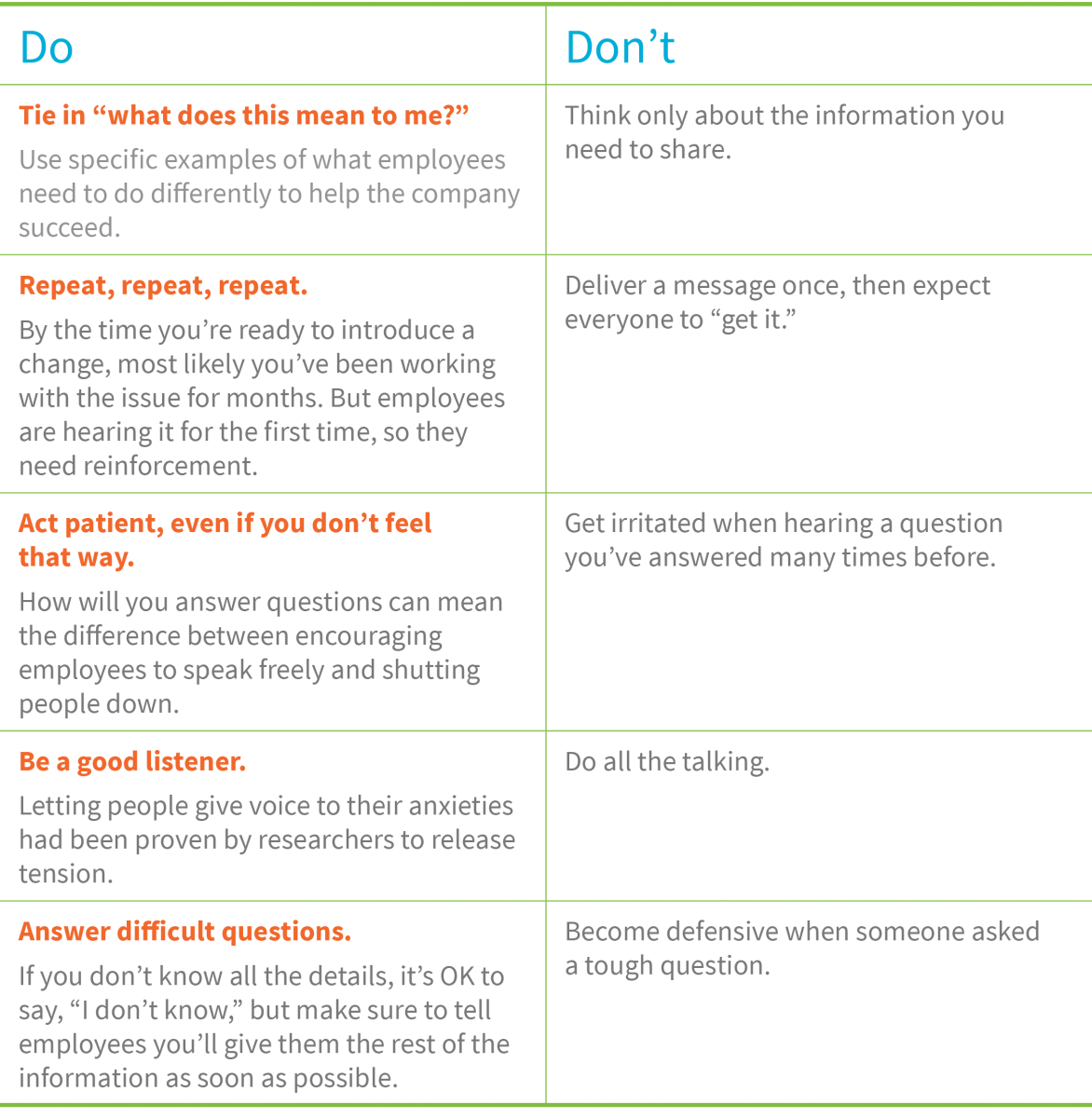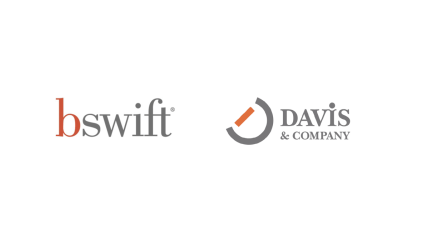
If your organization is about to introduce a big change, you must get your leaders on board.
After all, employees look to their supervisors to articulate why change is important and explain what will change and when.
Senior leaders have been closely involved in planning a change, yet others—VPs, directors, facility managers, etc.—probably aren’t in the loop. So, they’ll struggle with the role of change champions—providing motivation for their team members—especially when the going gets tough. For leaders to be effective during change, they need a clear path, useful resources and opportunities to learn.
Here are five ways you can help set the course for change:
1. Crush leaders’ fear of the unknown by building their knowledge of the change.
Leaders are just like everyone else, experiencing fear of the unknown with a big scary change. Not knowing all the details—such as when, how and why—can be overwhelming.
Combat fear with knowledge. The more you can educate leaders about the details of the change, the more confidence they will have in sharing it. Here are three ways to build knowledge.
- Provide a situation analysis—a snapshot of what’s going on at that moment in time, so leaders can get the big-picture context.
- Explain the “why” with an elevator speech. It provides a short “script” to get the conversation started about what is changing and why.
- Create a template to help leaders connect the dots between the changes and their business or function:
2. Prepare them for the journey, and set clear expectations.
We expect leaders to act as guides through change, but leaders aren’t always clear about what that role entails—and the team could get lost. Prevent a wrong turn by outlining expectations. Here’s an example:
A leader’s role is to:
- Emphasize what matters
- Interpret the big picture to convey “what it means to us”
- Allow ample time for questions, answer what questions you can, then get back to employees with answers
- Listen to employees’ questions, concerns and ideas
It’s important for these reasons:
- Employees look to you to provide direction and focus.
- Abstract high-level information can become concrete and meaningful.
- Dialogue is the most important tool in communication; it allows employees to participate and helps them work through issues.
- Listening demonstrates that you value employees and respect their viewpoints.
3. Fill leaders’ packs with useful tools, and provide resources they need to succeed.
A hiker’s backpack is his key to successfully reaching his destination. It contains all the tools to overcome obstacles, maintain daily tasks and reach milestones. Use this same idea to create a leader “pack” that contains all the tools they need to communicate effectively during change. Here are two key resources to include:
- Key messages
A key message document clearly outlines the facts and ensures that everyone in your company will get the same story. It also provides leaders with a script to get the conversation started with their teams.
- FAQs
A good list of FAQs helps leaders predict the tough questions employees are likely to ask and gives them the information they need to respond intelligently and honestly.
Here are some questions to think about when drafting your FAQs for an upcoming initiative or change:
- What is the change and why is it important?
- When will it occur?
- Who will be impacted?
- What do I/we need to do differently?
- Where can I go to ask questions or get more info?
When delivering your leader communication “pack,” clearly explain the following to ensure they understand what’s expected:
- Purpose/role: “You are key to our change efforts. Use this toolkit as a guide to better understand the initiative and help translate what it means to employees in your area of the business.”
- Timing/action: “Schedule a team meeting within 30 days to answer questions and discuss next steps for your department.”
4. Train leaders to overcome obstacles, and build communication skills.
On any journey, there are challenges. However, the more prepared you are, the easier it will be to conquer the barriers.
To help leaders develop the communication skills they need, develop a workshop—either as part of a scheduled meeting or a stand-alone event—to share advice and provide time to practice.
Focus on tips like these:

5. Plan frequent check-ins to discuss how change is progressing.
Assess progress to identify when to adjust or change course. Don’t wait until the end of your journey to see if you are reaching milestones and maintaining daily activities.
Conduct interviews
A month or two after a change has launched, facilitate interviews to ask leaders about the communication process. Ask questions like:
- Have you shared the details of the change with your organization?
- Do you have the information you need to answer employees’ questions?
- What are the main questions employees have?
This will help determine how well leaders are taking on their role in communication.
Distribute a survey
Surveys are a great way to get employee feedback on specific efforts—such as a big change. The results will give you the evidence you need to make informed decisions.
First, identify two to three outcomes—what you want to learn—as a result of your survey.
Here are examples of good objectives that are simple and specific:
- Assess how well employees understand the change
- Gauge the effectiveness of your communication efforts
- Determine how well leaders are communicating
Then, create a survey that is:
- Short, targeted and easy for employees to complete
- Designed with a story in mind (beginning, middle and end), so it’s easy to follow
- Purposeful and immediately actionable
There are so many ways you can help prepare leaders for change. Don’t leave it to chance.
Originally published on ragan.com





